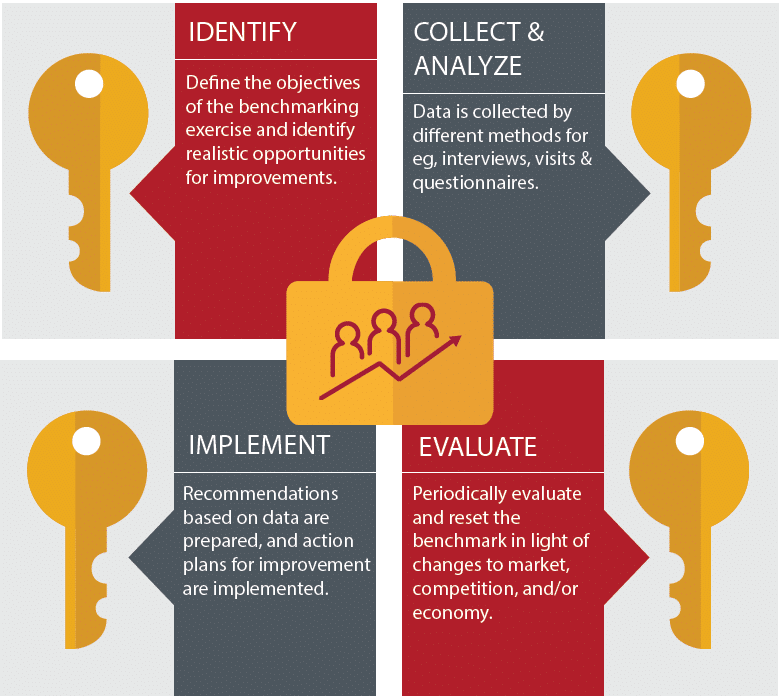Now that we understand what benchmarking is, we move on to the 4 keys of successful benchmarking. As a critical tool for self-evaluation, benchmarking provides useful comparisons on key metrics such as total cost of finance, allocation of FTEs across processes, cost per invoice, percentage of time spent on analytics, etc. Benchmarking helps leaders define the right improvement strategy for their organization, by enabling them to identify where the organization leads, lags or operates at par with other organizations. In addition, benchmarking provides the basis by which an organization can articulate key issues, helping to identify and address the areas that most urgently need improvement.
Key Takeaways
-
Benchmarking begins with clarity: You must first identify what you want to benchmark and realistic improvement opportunities
-
Collecting and analyzing data rigorously is critical: Good benchmarking depends on comparing apples to apples
-
Benchmarking only delivers value when followed by action and ongoing evaluation: It should become a continuous process
So what does the benchmarking process look like? It involves four main steps (keys) that help businesses to discover, deliver and maintain enhanced value from the functions being evaluated.
1. Identify
Define the objectives of the benchmarking exercise and identify realistic opportunities for improvements.
2. Collect & analyze
Collect data from different methods, such as interviews, visits, and questionnaires. Analyze this information against a comparable dataset.
3. Implement
Make recommendations based on insights gleaned from the data. Develop an action plan for improvement.
4. Evaluate
Regularly evaluate and reset the benchmark in light of changes to the market, competition, or economy.

Ultimately, benchmarking should become an automatic (and automated) process. When used with other analytic tools, such as leading practice comparison and internal voice of the customer, benchmarking provides insight not available by other means, and can be the basis for better decision-making in your business.
Frequently asked questions
What is benchmarking, and why should organizations do it?
Benchmarking is the process of comparing an organization’s performance, using specific metrics or processes, against external or internal standards or peers. Benchmarking provides a basis for self-evaluation: it helps an organization determine whether it leads, lags, or performs on par with comparable entities. This enables leaders to identify priority areas for improvement and define targeted improvement strategies.
How does an organization perform benchmarking effectively?
Effective benchmarking requires following the four keys: first, clearly identify what you want to benchmark and what improvements you’re seeking; second, collect & analyze data using rigorous methods and comparable datasets; third, implement recommendations via actionable plans; and finally, evaluate results regularly and reset benchmarks as the operating environment changes (market, competition, economy).
Is benchmarking a one-time exercise or an ongoing process?
Benchmarking should not be a one-off event. For benchmarking to yield real value, it must become an ongoing, ideally automated, process. Organizations should continuously collect data, evaluate performance, and re-set benchmarks in light of evolving conditions, making benchmarking part of a culture of continual improvement rather than a sporadic audit.
Learn more about our contact center benchmark.
READ MOREFinding out how benchmarking can support your organization.
CONTACT US
